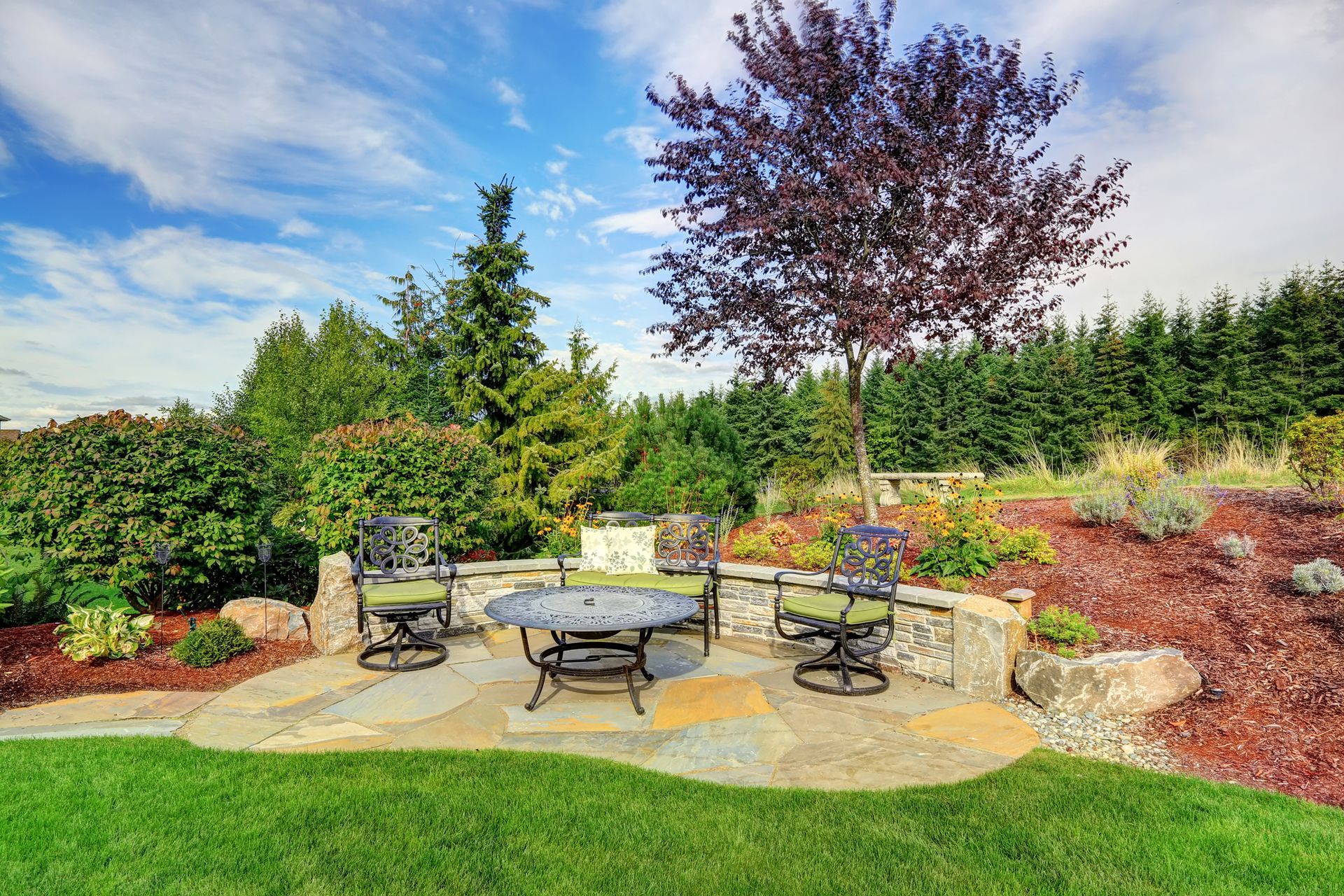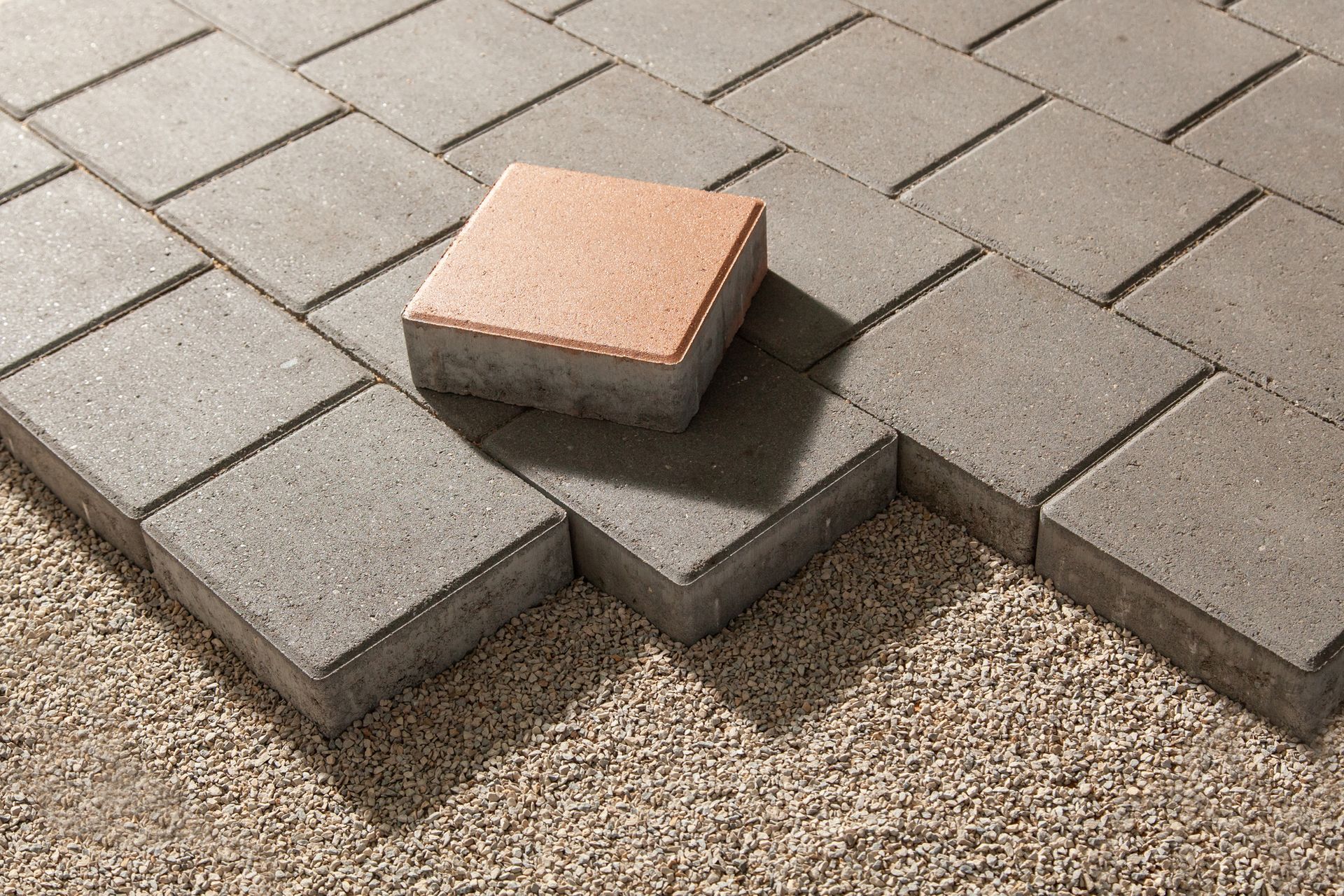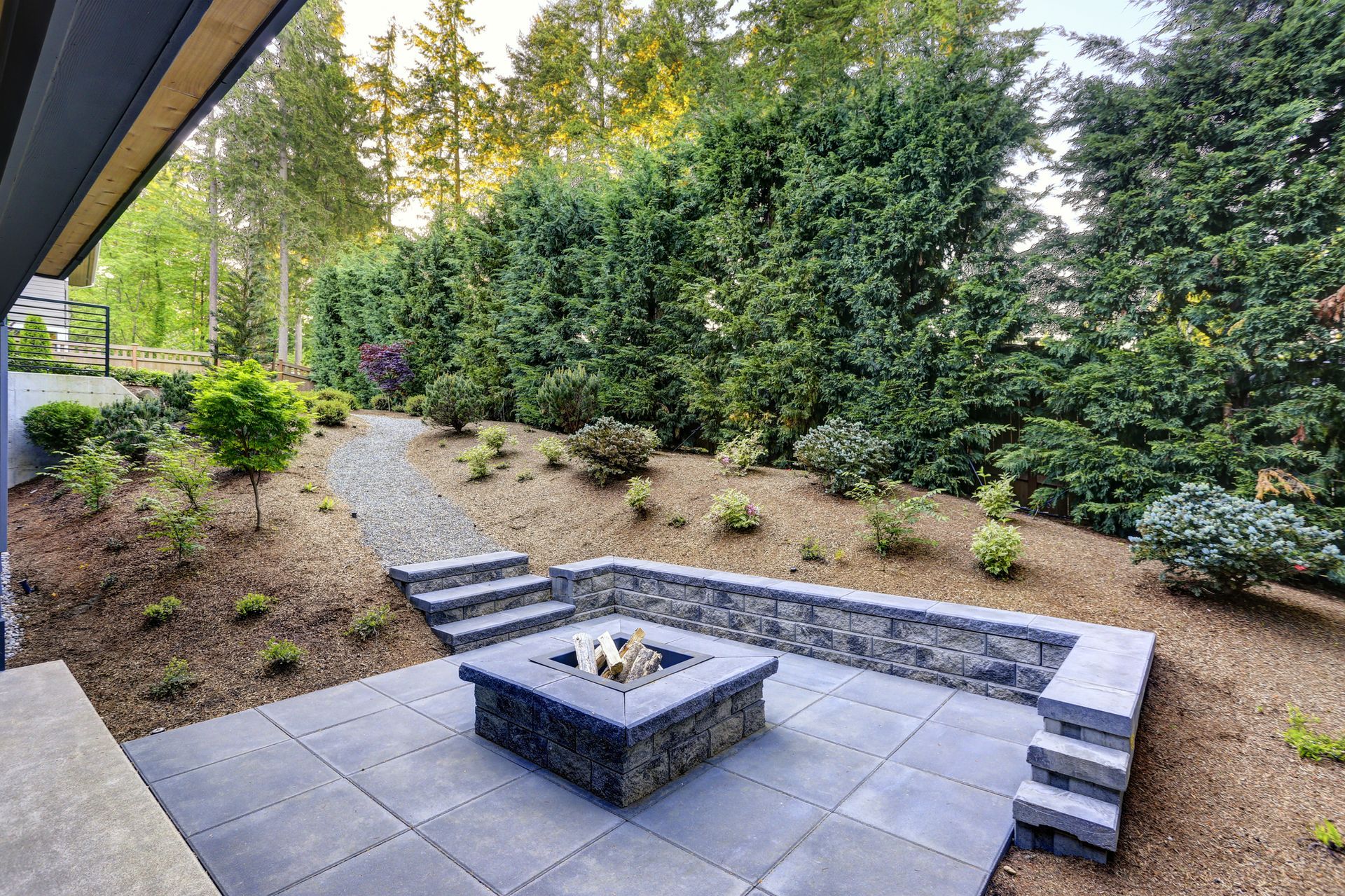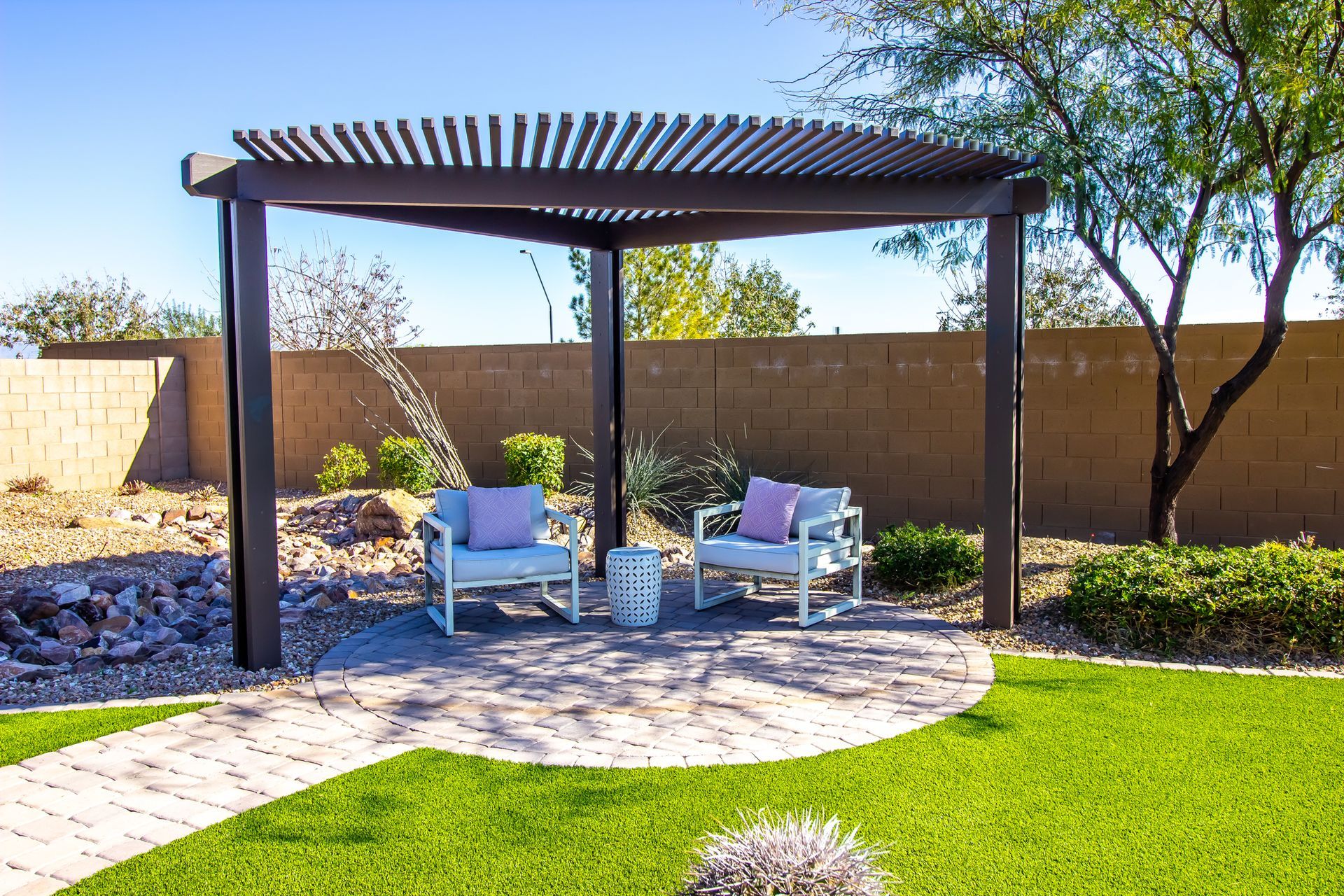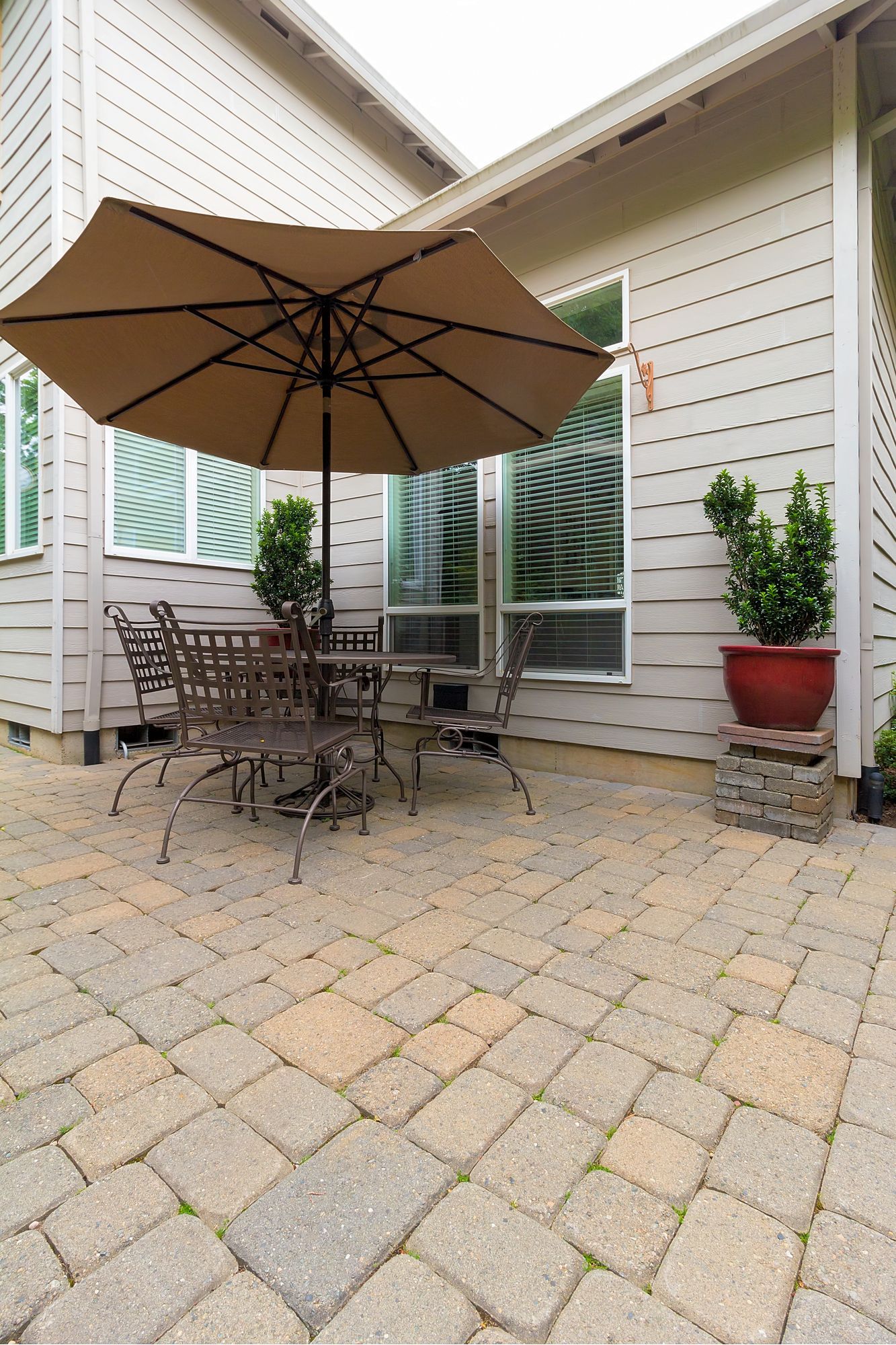Elevate Your Outdoor: How Do You Hardscape A Backyard?
Landscaping a backyard can be an exciting and rewarding experience. By introducing hardscape elements into the design, homeowners have the opportunity to create outdoor living spaces that are both visually appealing and functional.
Hardscaping is defined as the use of man-made materials such as stone, pavers, wood, or gravel to enhance a landscape. When done correctly, hardscaping can add structure, interest, and value to any home’s exterior.
This article will provide guidance on how to effectively incorporate these elements for backyard designs that meet both aesthetic and practical needs.
Contact Us
We will get back to you as soon as possible.
Please try again later.
Planning A Hardscaping Design
Hardscaping a backyard requires careful consideration and planning. As a landscape architect, it is important to assess the needs of the client as well as their expectations for the project. To begin creating an effective design plan, one must take into account all aspects of the space and its potential uses. Visualizing a design that meets both the aesthetic requirements and functional needs can be challenging but rewarding.
It is essential to consider how the hardscaping elements relate to each other, such as pathways leading from one area to another or spaces used for entertaining guests. Additionally, factors like existing vegetation, topography and views should also be taken into account when developing the concept behind the design.
The success of any outdoor hardscape depends on understanding every aspect of what makes up a successful design while utilizing creative problem-solving skills throughout the entire process. By taking these steps in advance, you will be able to create a unique backyard environment tailored specifically to your clients' vision.
Top Hardscaping Designs For Your Backyard
- Terraced Gardens. Terraced gardens are a visually stunning way to add dimension to your backyard landscape. By creating multiple levels using retaining walls, you can transform a sloping or uneven yard into an organized, cascading paradise. These terraces offer space for diverse plantings, seating areas, and even water features, making your backyard feel like a private oasis amidst nature.
- Outdoor Living Spaces. Expand your living space outdoors by incorporating stylish hardscaping features. From cozy fire pits and outdoor kitchens to comfortable seating areas and pergolas, you can create a functional and inviting space perfect for entertaining guests or simply unwinding with your family.
- Paver Patios and Pathways. Paver patios and pathways are timeless hardscaping elements that add both beauty and practicality to your backyard. With an extensive array of materials and designs available, you can customize the look and feel of your patio or pathway to suit your preferences. Whether you opt for rustic cobblestones, sleek concrete pavers, or natural stone, these surfaces offer durability and elegance to your outdoor space.
- Water Features. The gentle sound of flowing water can create a serene atmosphere in your backyard. Installing a water feature, such as a cascading waterfall, a tranquil pond, or a modern fountain, can be the focal point of your hardscape design. Water features not only add a touch of sophistication but also attract local wildlife, making your backyard a nature-friendly haven.
- Retaining Walls. Retaining walls serve both functional and aesthetic purposes in hardscaping. Aside from preventing soil erosion and supporting sloped areas, retaining walls can add architectural interest to your backyard. Choose from a variety of materials, like stacked stones, concrete blocks, or timber, to complement your overall design theme.
- Outdoor Lighting. Enhance the beauty and safety of your hardscape design with strategically placed outdoor lighting. Soft, warm lights can create a cozy ambiance, while accent lighting can highlight key features like sculptures, water elements, or lush plantings. Additionally, well-placed lighting can extend your backyard's usability into the evening hours, enabling you to enjoy your outdoor space even after the sun sets.
- Sustainable Hardscaping. Incorporating environmentally friendly hardscaping practices can make your backyard design not only beautiful but also sustainable. Utilizing permeable pavers or porous materials for your patios and pathways allows rainwater to soak into the ground, reducing runoff and helping to replenish the groundwater table
Selecting The Right Materials
The selection of materials for hardscaping a backyard is an essential part of the design process. In order to create a cohesive and aesthetically pleasing result, choosing colors, designing shapes, and selecting quality materials are all important considerations. It can be difficult to determine the best combination for a landscape project; however, with careful thought and consideration, it is possible to create a beautiful outdoor space that will last for many years.
When considering color choices for hardscape projects, there are several factors to consider. For example, complimentary tones or shades should be chosen in relation to adjacent buildings or other features within the yard so as not to detract from their beauty or distract from the overall look of the area. Additionally, certain textures and finishes can help enhance existing elements when used correctly; neutral shades such as tans and grays may provide added visual interest while still maintaining subtlety.
Shapes also play an integral role in creating attractive designs in landscaping projects. Traditional rectangles and squares may offer clean lines but they lack creativity; adding curvilinear elements helps add depth and interest without overpowering the natural environment around them. Mixing different stones together can create unique patterns which further accentuate architectural features like walls or walks.
With some creativity and attention to detail, any hardscape project can become something truly special.
Installing The Hardscape Elements
Installing the hardscape elements of a backyard can be an exciting endeavor, providing homeowners with a sense of satisfaction like no other. As they roll up their sleeves and get to work, it is essential for them to have patience when laying out the design plan and constructing each element. With careful consideration, creating pathways that lead through the garden can become a captivating journey for all who traverse them.
First, choosing the materials for any walkways is key in achieving the desired look and feel for your outdoor space; whether you go with pea gravel or flagstone, concrete pavers are always great choices too. It's important to select something that will hold up against heavy foot traffic as well as regular maintenance cycles. Additionally, ensure there is sufficient drainage along these paths so water runoff doesn't cause damage over time:
Creating Paths
Preparing Base Material:
- Loosen soil if needed.
- Level ground using rake or shovel.
- Add crushed stone or sand base material before installing pathway surface material (e.g., bricks).
Installing Surface Materials:
- Place stones into desired pattern on top of prepared base material & add mortar/cement mixture between stones if necessary.
- Check levels during installation process to make sure path lays even across entire length & width of walkway(s).
Finishing Steps:
- Fill gaps between stones with more mortar/cement mixture & trowel down smooth surfaces after drying period has been reached (24–48 hours).
- Seal entire pathway surface area with sealant product once dry & check periodically every few years to reapply if needed.
Second, one should consider what plants would best suit the environment being created by taking into account sun exposure and local climate conditions. The selection of flora could include perennial shrubs such as boxwood hedges and colorful annual flowers like impatiens or petunias; this decision may also depend upon personal preference or purposeful use within the yard i.e., edible gardens vs ornamental flower beds etcetera. Once chosen, proper planting techniques must be employed in order to achieve successful growth while minimizing potential damages caused by bad weather conditions throughout the year—this includes utilizing mulch around root systems plus staking tall plants where appropriate in order to prevent wind damage later on down the line!
Hardscaping a backyard requires both precision planning and close attention to detail throughout each step of its construction process; however, working closely alongside experienced professionals can help alleviate some stress associated with making decisions about specific elements such as selecting materials for pathways or picking plants that fit certain criteria in terms of location and overall aesthetic value within an individual’s landscape design vision.
By employing these tips from knowledgeable experts in conjunction with their own creative ideas, anyone looking to give their backyard an added boost of style can do so without breaking a sweat!
Maintaining The Hardscape
Maintaining the hardscape of a backyard involves two key elements: water drainage and erosion control. Water drainage is essential for preventing standing pools of water, which can damage plant life or create mosquito-breeding grounds. Erosion control is important to ensure that any changes in elevation are not eroded away over time by wind or rainwater runoff.
In order to effectively manage these elements, it is essential to use materials suited to the environment. For example, using permeable pavers in areas where there is limited space available allows for water infiltration instead of pooling on top of soil surfaces. Additionally, features such as retaining walls can be used when necessary to prevent slippage due to excessive precipitation or other environmental factors.
It is also important to pay attention to maintenance needs when creating a hardscape design plan; this may include periodic inspections and repairs, as well as routine cleaning and weeding activities. To keep weeds from taking hold and disrupting desired growth patterns, proper mulching should be employed every springtime after new landscaping has been installed.
Properly maintaining the hardscape will help preserve its beauty year round while ensuring that its functionality remains intact over time.
Transform Your Backyard with Paver Contractors in Tucson
The hardscaping of a backyard is an important process that should not be taken lightly. Attention to detail and careful consideration will guarantee the best outcome for any project. From the initial planning stages, selecting materials, installation and maintenance, each step needs to be addressed in order to create a beautiful outdoor living space.
With careful foresight, knowledge of techniques and quality materials, it can be achieved successfully; transforming a mundane area into something truly special. The end result: a stunning transformation guaranteed to provide years of enjoyment and satisfaction for all who experience its beauty.
Tucson Pavers can help you transform your backyard into elegant outdoor living spacecs.
You might also like
Tucson Pavers & Patios Blog & News
Book a Service Today
We will get back to you as soon as possible
Please try again later
Navigation
Services
Working hours
- Mon - Wed
- -
- Thu - Sat
- -
- Sunday
- -


